The Only Way To Prevent Tomatoes From Getting Mealy or Rotten
The experts weigh in: Tricks to never buy another mealy or rotten tomato at the grocery store or farmers market.
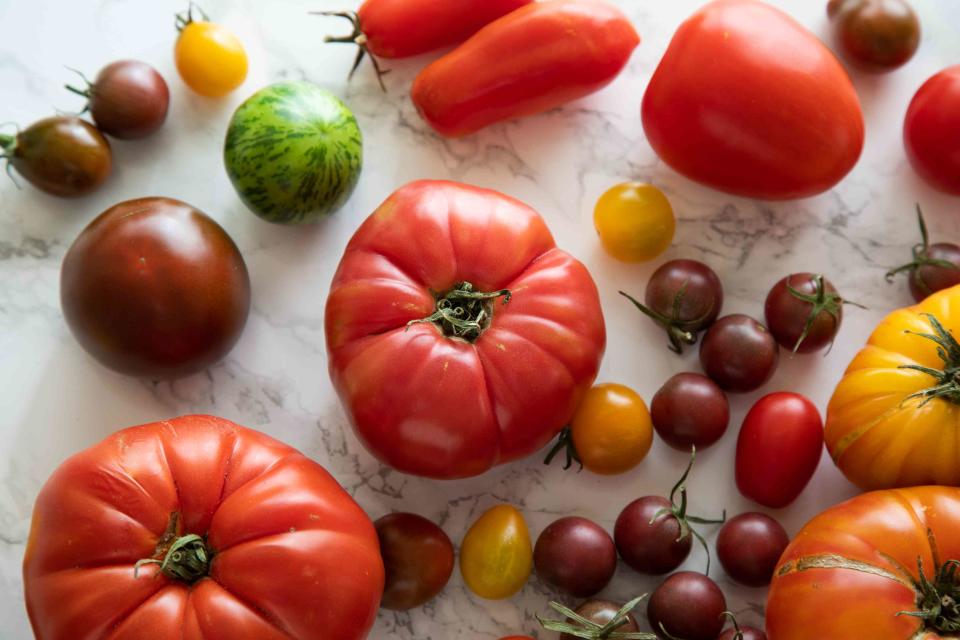
Simply Recipes / Lori Rice
You've likely done this dance: you're unpacking your groceries, putting cans in the pantry, cheeses in the fridge, and then you get to the tomatoes. Are they a fridge item, living side-by-side in your crisper drawer with your broccoli and leafy greens, or should they sit on your counter hanging with other room-temperature ingredients like garlic and potatoes?
How to store tomatoes is a question that's seemingly befuddled every grocery shopper who ever pushed a cart. Ultimately, you're trying to avoid one thing: you want to keep your tomatoes fresh, juicy, and delicious for as long as possible. Now that summer is here and farmers markets and grocery stores alike are filled with beautiful summer produce—including tomatoes—now is the time to finally learn how to keep your tomatoes from going rotten or mealy.
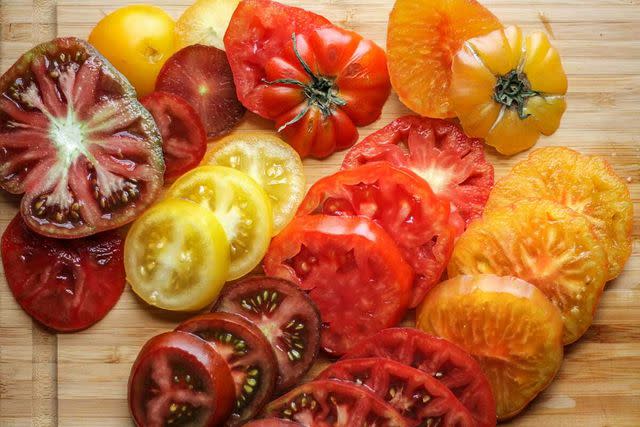
Simply Recipes / Aaron Hutcherson
What Makes Tomatoes Mealy?
To understand how to prevent a tomato from going mealy or rotten, let's define the ideal tomato. You're looking for a tomato that is tart, juicy, and sweet. That means looking for a ripe tomato that has reached its peak freshness—firm, but with some give, blemish-free, and heavy feeling for its size.
A mealy tomato is the opposite of juicy and pleasant. It has an unpleasant texture and is devoid of flavor. Mealiness generally comes from a disruption in ripening: as the fruit ripens, it converts starches to sugars, and mealy tomatoes are sometimes described as tasting gritty or floury. However, mealy tomatoes can also indicate a problem in growing—I saw many gardening websites point to soil issues or improper watering as reasons for mealy tomatoes.
Mealy tomatoes are difficult to repurpose. "I hate mealy tomatoes," says Micheline Maynard, a journalist, broadcaster, author, public speaker, and professor who writes the newsletter CulinaryWoman and has written books like Satisfaction Guaranteed: How Zingerman's Built a Corner Deli Into a Global Food Community.
"They are like flavorless melons. I honestly have not found a way to save them. I generally give up on them. I hate food waste, so I try to wait until peak season and not rush things."
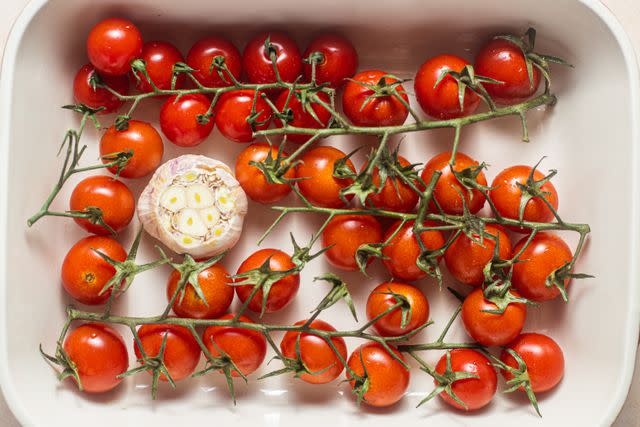
Simply Recipes / Karishma Pradhan
To Refrigerate or Not Refrigerate
The age-old question: should you put your tomatoes in the fridge? If you're like me, you've likely heard that you should never put tomatoes in the fridge—but is that based on any evidence, or is this just an old pearl of wisdom that's been repeated so often we accept it as truth?
Serious Eats culinary editor Daniel Gritzer tried to answer that question with his own set of tomato tests, and the answer he came up with is that it depends on how ripe your tomatoes are. Tomatoes want to hang around the 55 and 70°F degree range, hotter than a fridge but cooler than room temperature, particularly in the summer.
Gritzer finds that you want your tomatoes to reach peak ripeness without being refrigerated. Once they reach that point, you can keep them from going rotten longer by putting them in the fridge.
Maynard echoes Gritzer's findings: "You should leave firmer tomatoes on the counter, especially those that are not yet ripe," she says. "I put them stem side down with some space between them. I do refrigerate cherry tomatoes if I won't eat them quickly, but it's best to use them up as soon as possible. If you see any sign of juice 'weeping,' use those tomatoes ASAP.”
Refrigeration puts a pause on the ripening process. If a tomato is already ripe, you can slow the spoilage process and keep it fresher by putting it in the fridge—some sources say that a tomato can stay good in the fridge for up to two weeks. If it's not ripe, let it hang out on the counter until it's ripe, and then pop it in the fridge. However you store them, let the tomato warm to room temperature before eating for the best flavor.
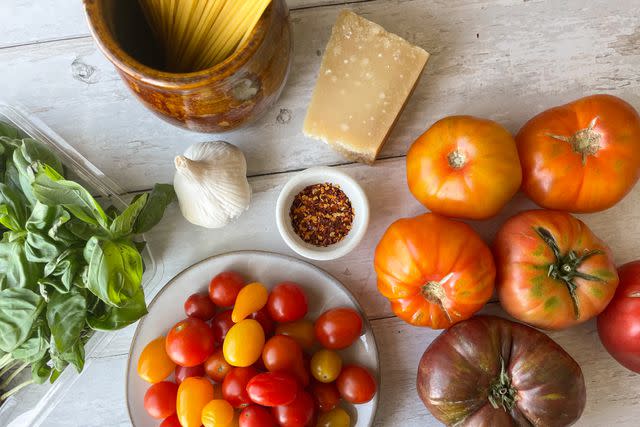
Simply Recipes / Sarah Tane
Seasonal Versus Conventional
You can get tomatoes all year round at most grocery stores. However, tomatoes are generally a summer vegetable, and perhaps more than most vegetables, the difference between a conventionally grown tomato and an in-season one from your local farmers market is stark—if you don't believe me, now is the perfect time for a taste test.
Read More: Our 21 Best Recipes For Ripe Summer Tomatoes
So should you store tomatoes differently based on where you got them and when? Yes, depending on ripeness. As Gritzer points out, "Because peak-season farmers market tomatoes are already perfectly ripe, they benefit very little from extra time in the heat, and in many cases, they are harmed by it, while the refrigerator does minimal harm once tomatoes are ripe."
Most conventionally-grown tomatoes have been refrigerated at some point, usually during transport, and they might reach your produce section not fully ripe. For these tomatoes, letting them ripen on the counter before putting them in the fridge is a good idea—but remember, if a tomato is mealy even when allowed to fully ripen, it might just be an issue with the tomato itself.
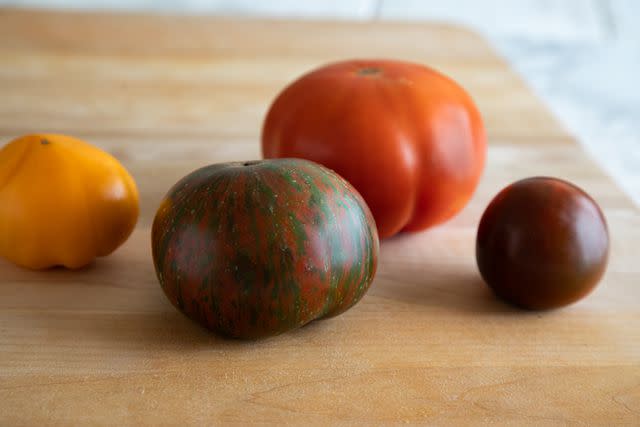
Simply Recipes / Lori Rice
3 Tips for Buying the Best Tomatoes
If you're at the store trying to determine which tomatoes to buy, Maynard has some tips: "First, smell the tomato. Does it have a nice tomato scent? Second, I weigh the tomato in my palm. A fully ripe tomato weighs more, and it should be a little soft," she says.
Maynard also prefers smaller tomatoes. "I try to buy smaller tomatoes because I believe the flesh will be denser and the flavor more concentrated. Bigger tomatoes can be full of water and seeds and you risk seeing all that drop out of the slices. Bigger ones are better for cooking, however. They are easier to core and remove the skins. You can strain the tomato water and use it in various ways."
Some tomatoes at the store come with stems—I assumed that meant they were fresher, but that's not necessarily the case. "It's great if the stem is on, because that can help to keep the tomato from cracking at the top, and it helps you pick them up, but it's not 100% essential. A good, firm tomato should hold up without a stem," says Maynard.

